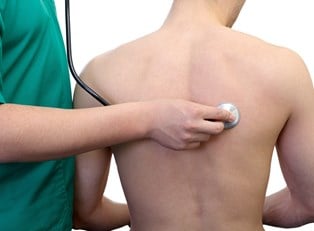Chronic Obstructive Pulmonary Disease, or COPD, is commonly referred to as a “progressive disease." Symptoms gradually get worse as the disease advances through a series of stages: mild, moderate, severe, and very severe. The treatment of each stage must be handled differently. The correct diagnosis and placement makes a difference in the treatment, severity, and overall outcome of the illness.
A Pulmonary Function Test (PFT) is used to determine the determine the severity and diagnose the stage of COPD. The test brings back data showing a ratio between the forced expiratory volume 1 (FEV1) and the forced vital capacity (FVC) of the lungs. In order to specify your method of treatment, an evaluation of the obstruction will occur. Ultimately this test will let you know how your disease should be treated. No two cases of COPD look exactly alike. A diagnosis can be affected by an individual's age, weight, or lifestyle.
Stage One
Stage one of COPD often goes undiagnosed. The onset symptoms of the disease hide under the mask of an unexplainable cough, shortness of breath, and increased mucus. The mild symptoms are hard to spot and barely noticeable; however, they should be taken seriously. Identifying the disease early on can slow its’ progression.
A PFT test would reveal a FEV1 equal or greater than 80%. In other words, the lungs are still in pretty good shape. Treatment is limited at this point, but regular exercise to strengthen the lungs, and cessation of smoking is recommended.
Stage Two
Moderate COPD gradually becomes noticeable. Stage two of COPD shares many of the same indicators as stage one —shortness of breath, coughing, increase of mucus—but at a more severe level. At this point, you may experience added fatigue with everyday activities, periodic disruptions during sleep, and tightness in your chest.
Individuals diagnosed with the disease find their FEV1 levels fall between 50 and 79 percent. As the lungs grow weaker, a bronchodilator may be prescribed to help open up the airways in an emergency situation.
Stage Three
Severe COPD generally places more limitations on daily life. By now the symptoms of the disease have worsened substantially. A few minutes of walking can leave you out of breath. The importance of making the necessary steps to fight the disease should increase.
During stage three the FEV1 rests between 30% to 49%. The individual should make the effort to exercise regularly to strengthen their respiratory system. Because of the severity, medications and supplemental oxygen will become essential.
Stage Four
The final stage of the disease further reduces your ability to be mobile without a constant supply of oxygen. Stage four COPD, or the end-stage of the disease, lowers your FEV1 levels to under 30%. An intense amount of fatigue overwhelms the body making a simple activity challenging.
Additionally It will become difficult for your body to stay at a healthy weight. The extra energy being exerted to help you breathe burns more calories than you can often consume.



